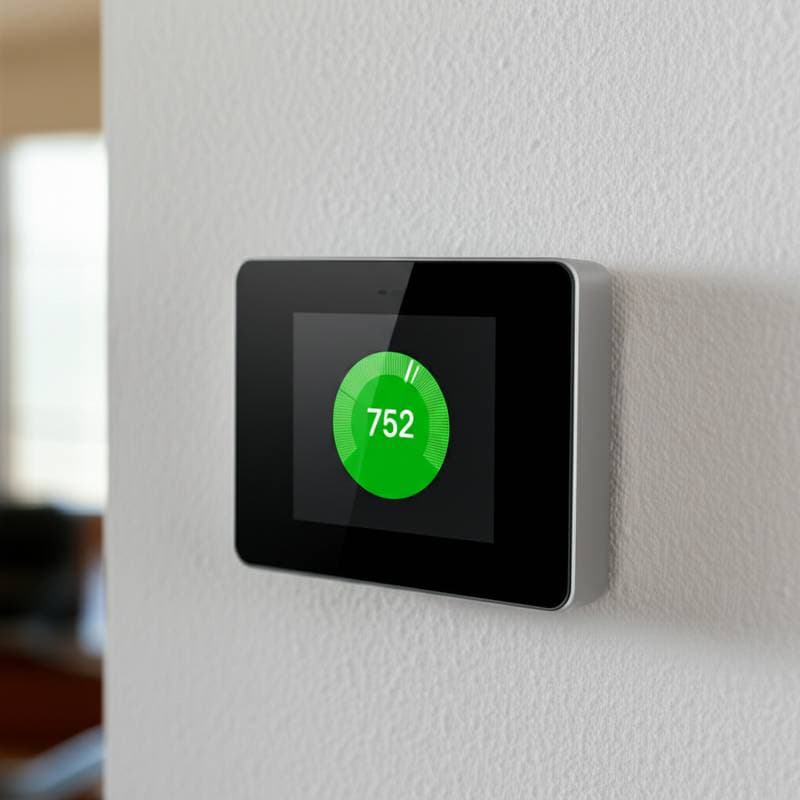How Smart Thermostats Reduce HVAC Costs by 15 Percent Through 2025 Rebates
Smart thermostats represent a significant advancement in home energy management. These devices learn user preferences and adjust temperatures automatically to optimize efficiency. Homeowners who install them often see reductions in heating, ventilation, and air conditioning bills by up to 15 percent.
The appeal lies in their ability to integrate seamlessly with daily routines. For instance, a smart thermostat can lower the heat when the house is empty and raise it before residents return. This precision minimizes energy waste without sacrificing comfort.
Understanding Smart Thermostats
A smart thermostat differs from traditional models by connecting to the internet and using sensors to monitor occupancy and weather conditions. Popular brands include Nest, Ecobee, and Honeywell, each offering features like remote control via smartphone apps. These tools provide detailed energy usage reports, helping users identify patterns for further savings.
Installation typically requires basic wiring knowledge, though professional services ensure proper setup. Once installed, the device programs itself over time based on observed behaviors. This adaptive learning leads to consistent performance year-round.
Energy savings stem from reduced runtime of HVAC systems. Studies indicate average annual reductions of 10 to 15 percent in utility costs for heating and cooling. In colder climates, the impact proves even more pronounced during peak winter months.
The Financial Benefits of Upgrading
Upgrading to a smart thermostat yields immediate and long-term financial advantages. Initial costs range from $130 to $250 per unit, depending on the model. However, rebates available in 2025 offset much of this expense, with incentives up to $500 in select programs.
Federal initiatives, such as those from the Inflation Reduction Act, support these rebates to promote energy efficiency. Local utilities in areas like Philadelphia often provide additional credits for eligible installations. Homeowners qualify by purchasing ENERGY STAR-certified models and submitting proof of installation.
Beyond rebates, the devices increase property value. Real estate experts note that energy-efficient upgrades appeal to buyers seeking lower operating costs. Over five years, cumulative savings can exceed $1,000, making the investment worthwhile.
Navigating 2025 Rebate Programs
Rebate programs for 2025 focus on accelerating the adoption of smart technology in homes. Eligibility requires the thermostat to meet specific efficiency standards, such as Wi-Fi connectivity and programmable schedules. Applications open early in the year, with funds distributed on a first-come, first-served basis.
To apply, homeowners visit utility websites or contact local energy offices for forms. Required documentation includes receipts, model numbers, and installation dates. Processing times vary, but rebates typically arrive within 60 days.
Some programs partner with retailers for instant discounts at purchase. This approach simplifies the process and encourages immediate action. Always verify current terms, as availability changes based on regional budgets.
Step-by-Step Guide to Installation and Setup
-
Choose a compatible model based on your HVAC system type, such as forced air or radiant heating.
-
Turn off power to the furnace or air handler at the circuit breaker for safety.
-
Remove the old thermostat by unscrewing the mounting plate and disconnecting wires.
-
Connect wires to the new smart thermostat according to the manufacturer's diagram, ensuring secure attachments.
-
Mount the device on the wall and restore power, then follow app instructions to configure settings.
-
Test functionality by adjusting temperatures remotely and reviewing initial energy reports.
Professional installation costs $100 to $200 but guarantees compliance with rebate requirements. For DIY enthusiasts, video tutorials from manufacturers provide clear guidance.
Enhancing Comfort and Grid Stability
Smart thermostats improve daily living by maintaining ideal temperatures without manual adjustments. Geofencing features detect when users leave or arrive home, ensuring the space feels welcoming upon entry. Integration with voice assistants like Alexa or Google Home adds convenience for hands-free control.
On a broader scale, widespread adoption helps stabilize the energy grid. By shifting usage away from peak hours, these devices reduce strain on power plants and lower overall emissions. Communities benefit from decreased reliance on fossil fuels, supporting environmental goals.
Users report higher satisfaction due to customizable alerts for filter changes or maintenance needs. This proactive approach prevents costly repairs and extends HVAC system lifespan.
Maximize Savings and Efficiency Now
Investing in a smart thermostat positions homeowners for substantial long-term gains. With 2025 rebates reducing upfront costs, the timing proves ideal for upgrades. These devices deliver not only financial relief but also enhanced control over home environments.
Take the first step by researching local incentives and selecting a model that fits your needs. The combination of savings, comfort, and sustainability makes this upgrade a smart choice for any household. Begin the process today to enjoy lower bills starting next season.
